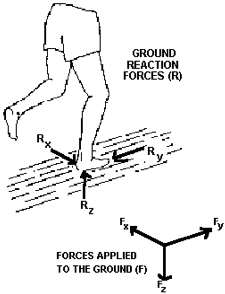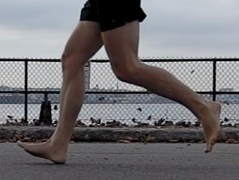Top Five Myths About Running Shoes
I’m getting pretty close again to the end of another Nike shoe era. And this time, I’ve actually decided that I’ll keep a pretty open mind about my next pair. I usually stick with the same pair of running shoes every year for practical reasons. I just don’t wanna bother with getting fitted for a new pair or having my gait re-analyzed for the nth time. But, in lieu of my recent move to Santiago, I figured I’d start with a clean slate and go for something different. So in preparation for my visit to Mall Sport Santiago, I figured it wouldn’t hurt to get my bearings on some of the most common advice/ opinion I get from people about running shoes.
Many researchers have found no differences in peak impact force among different amounts of shoe cushioning and, in some instances, softer cushioning was found to increase impact force.
1. Barefoot running shoes will correct your running form.
It’s possible, but this doesn’t apply to everyone (Barefoot Injury Epidemic). It’s a known fact that running shoes can change natural mechanics because the type of shoe, material, and/or amount of cushioning alters our sensory feedback. For instance, if you’re running with well-cushioned shoes, your body prepares less for the impact as it makes contact with the surface vs. if you’re running barefoot, you’re more likely to tense your muscles prior to impact to minimize impact forces (Science of Running). Although, not every barefoot runner adapts the proper gait for barefoot running. Some barefoot runners still heelstrike.
2. Expensive running shoes are better.
Nope. Actually, there was a study done with 4,358 runners in the Bern Grand Prix (a 9.6mile road race) where they found that 40% of the participants experience injuries not because of training surface, running speed, weekly mileage or even competitive training… “runners in shoes that cost more than $95 were more than twice as likely to get hurt as runners in shoes that cost less than $40″ (The Painful Truth About Trainers).
3. If you want to minimize chances of injury, you need shoes that match your foot shape.
Not true. I was always a firm believer of this one. I’m an over-pronator so I always bought expensive running shoes with a lot of “support.” When I started running 5-6 miles regularly, I aggravated the anterior muscle sheath on my left ankle and saw a podiatrist. She gave me orthotics to fix my over-pronation and I tested it for two weeks. At the end of the two-week period, I couldn’t even go jogging without stopping every minute. (New York Times: Do certain types of sneakers prevent injuries?)
I saw a physiotherapist who was a triathlete, Olympic trialist, and 3-time Ironman who told me to ditch the orthotics. He pointed out that there was nothing wrong with my shoes – I was just overstriding and heel-striking. Big no-no’s. Couple that with longer distances over a short period of time and you’re asking for trouble. So, I kept my shoes, shortened my stride and consciously worked on form. Two weeks later, I was back to my happy self 🙂
4. More cushioning is definitely good for you.
Ready for this? Many researchers have found no differences in peak impact force among different amounts of shoe cushioning and, in some instances, softer cushioning was found to increase impact force (The Myth of Running Shoe Cushioning). In other words, there’s no evidence indicating that well-cushioned shoes help runners, more than minimally cushioned shoes. If any, that comfy soft support only bottoms out when you strike the surface.
5. When a shoe company replaces an old model and upgrades it with “minor additions for added support”, you can still wear the same new model.
Yeah, right. I used to wear a pair of NIKE Zoom Equalon+3 that lasted me more than 700 miles. I loved those shoes. I still dream about wearing my old pair. The following year, Nike released Equalon+4 and it just wasn’t the same. They’ve made some “structural” improvements. I got injured wearing the new pair within a few weeks. I was just stubborn.
Pretty sure there’s lots more myths floating around, and I come across them every time I have to pick up a new pair. I’m curious to test out a no-name shoe brand that just fits comfortably and lasts me another 700+ miles. Especially, if it won’t put a hole in my pocket.
Related Posts

Finding the Best Running Apps


